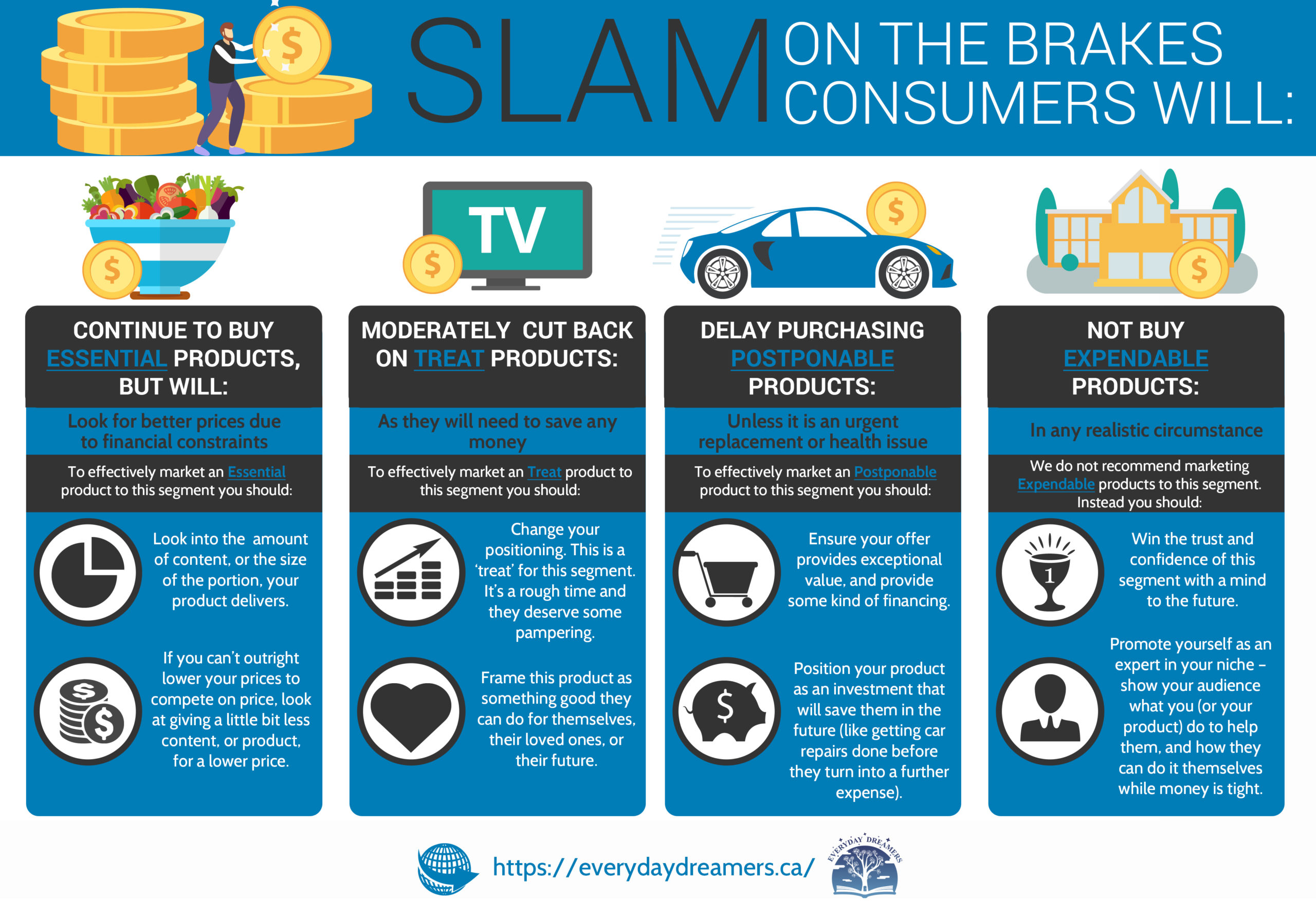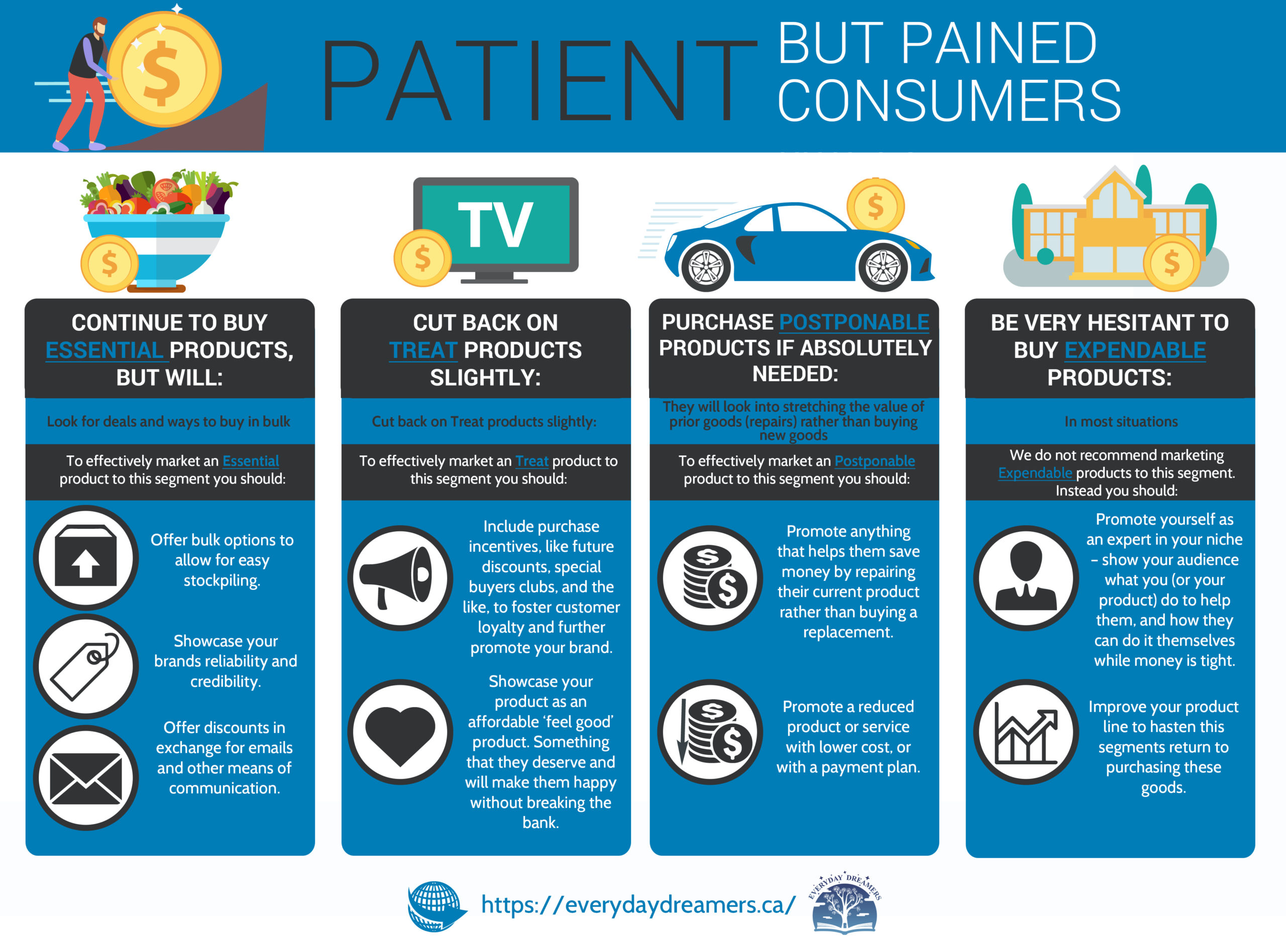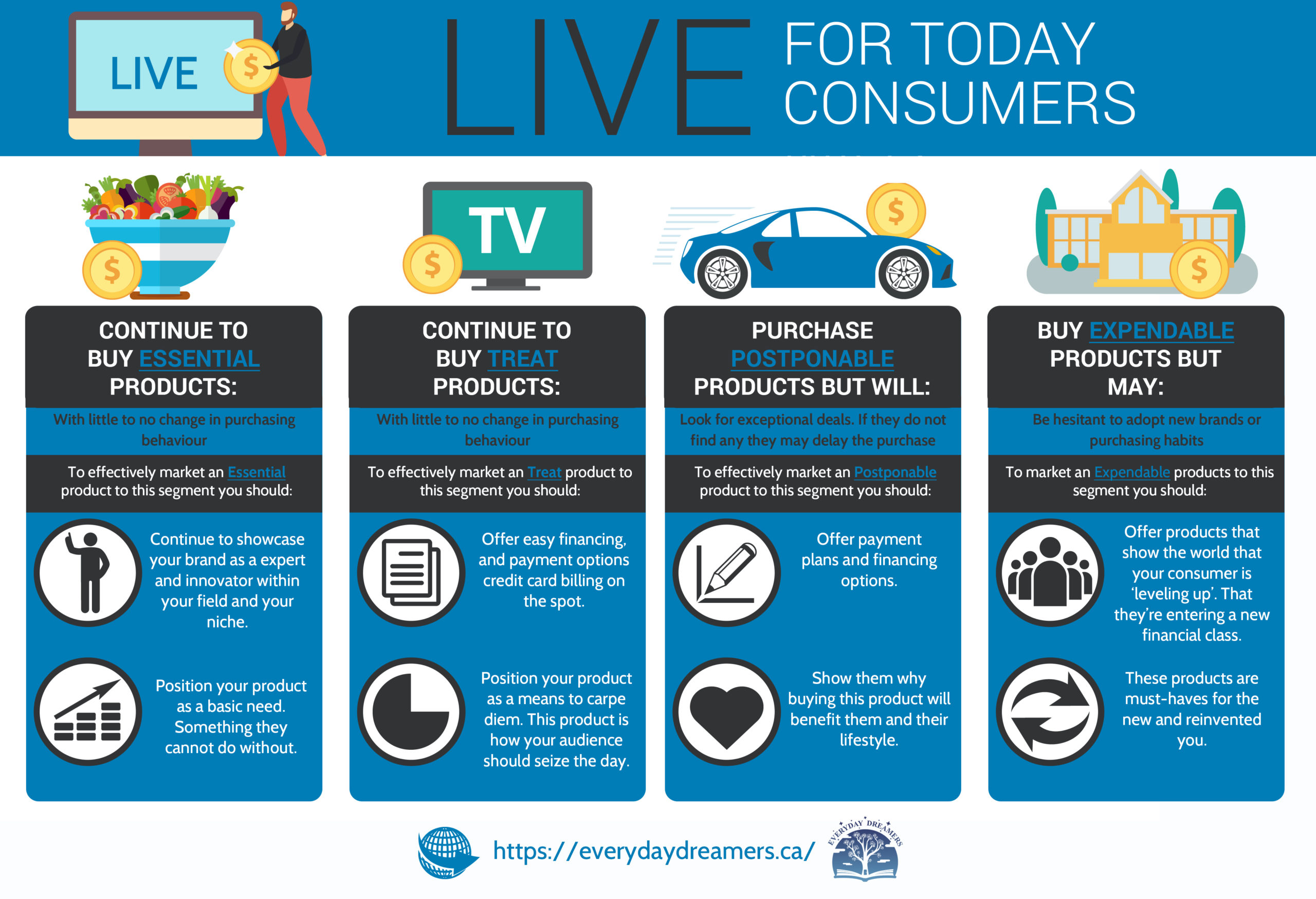Take a deep dive into the power of digital marketing during the COVID 19 pandemic.
I was on a virtual happy hour a few weeks back for a business networking group I’m in when I had a really powerful idea for my beauty-fun community of creative, purpose driven of entrepreneurs. I invited digital marketing samurai, Spencer Cox to guest blog and share his pearls of expertise in how to bulletproof your business with digital marketing during uncertain economic times.
Meet Spencer Cox
Business owners hire Spencer to take the pain out of growing their business online. His company, EveryDayDreamers Marketing is a full-service digital marketing agency specializing in connecting brands with their target customers and automating the marketing process for their business.
Grab a hot drink, cozy up as Spencer demystifies how leaning into your digital marketing during the COVID19 pandemic can make you recession proof. Trust me, this read is worth your precious time and energy.
Bulletproof Your Business With Digital Marketing
by Spencer Cox
There’s no point in sugarcoating it – the market is in a slump. Despite this, you can use the upcoming downturn to your advantage if you plan properly and make use of clever marketing tactics.
Marketers, specifically digital marketers, are uniquely positioned for the months ahead. Trial and error has always been the nature of digital marketing. As such, we’re resilient in our practice, and are adept at positioning our business (and the business of others) to thrive in tough times and flourish in better days.
Digital marketing is a brand’s ticket to getting through this particular slump.
Through leveraging new innovations in automation, social media, and analytics, companies of any size can create an effective, cost-efficient online strategy that drives engagements, encourages business development, and fosters sales during a downturn.
There are a few things you’ll need to understand before being able to put together your own recession marketing plan:
- Why (and if) if makes sense to invest in marketing during a recession
- Recession psychology and the driving forces that change consumer behavior and their priorities
- Time tested recession tactics that build on the new needs and priorities we’re seeing from consumers during tough times
Let’s start with why it makes sense to invest in marketing during a recession.
Dollars And Cents: Should Your Businesses Market During A Recession?
Marketing is often the first thing most businesses cut when they feel financial strain, and I can understand why.
It feels like an expense. Especially since some marketing tactics, like SEO, can take up to 6 months to show any meaningful ROI.
Add that to the fact that fewer people are buying during a recession and most business owners are able to make a decision to slash the marketing budget, especially for tactics that have yet to become profitable.
This approach is shortsighted at best. It prioritized short term benefits over long term returns. What savvy business owners should be doing is reassessing their marketing spend, and reallocating that spend to proven recession tactics. Doing so will position you as an industry authority and someone that consumers can trust once they financially recover.
Research over the 2008 Great Recession found that companies who dropped their advertising budget by 50% took three years to reach pre-recession profit margins. In the same vein, the study found that brands who completely quit advertising took five years (IPA, 2008).
The thing about marketing is that it yields benefits well into the future. You’re likely still benefiting from marketing you did 3-5 years ago, and the marketing you invest in right now will benefit you 3-5 years into the future (IPA, 2008).
So if you choose to stop investing in marketing right now, you likely won’t see any initial loss in revenue, but you’re stunting the growth of your business for the 3-5 years.
Furthermore, in this particular recession, people are spending far more time online. Not only does the cost of advertising decrease, but since there are fewer voices vying for people’s attention, capturing a higher percentage of your target market becomes easier as well.
Changes In Consumer Psychology During a Recession
The first thing to remember when learning how to market in a downturn is why people buy things in the first place. They have:
- Disposable income
- A positive outlook for their future
- More trust in brands and the economy
- A welcoming mindset for the consumer lifestyle
But during a downturn, unemployment, depreciating assets, and other financial issues force them to adopt new fiscal behaviors — behaviors that can become permanent habits.
Getting into the mind of the consumer has always been part of the job, but it’s especially relevant when creating strategies during a downturn.
There are 4 main customer segments recessions tend to bring out (Quelch & Jocz, 2009):
Customer Segments:
- Slam-on-the-breaks
- Pained-but-patient
- Comfortably well-off
- Live-for-today
Slam-On-The-Breaks
These consumers are the most vulnerable and feel the worst of the economic impact from a market slump. They limit spending making as many reductions as they can, or flat out eliminating non-essential goods and services. Lower-income households make up the majority of this segment, but even those that make more can fall into this category.
Patient-But-Pained Consumers
These consumers are more flexible with their spending and have a more positive outlook. But they also share doubts about how fast or smoothly the economy will recover. They are more concerned about maintaining their standard of living. They reevaluate their budgets and spend with caution.
This is the largest segment. Most consumers in this group remain employed, but their income varies.
Comfortably Well-Off Consumers
The recession does not impact this segment to the extent of others. While they continue making regular purchases, they are more discriminating about what they buy. Comfortably well-off consumers are typically in the top 5% of earners. They include consumers who are less financially well-off but feel assured about their financial stability.
Live-For-Today Consumers
This segment continues to spend at pre-recession levels and does not share the same concerns for saving money as other segments. Live-for-today consumers react to the recession by temporarily putting off big purchases, though remain interested in consumer technology. They are also more likely to rent and share a preference for experiences rather than objects.
This group generally consists of younger consumers, although a 2006 study (Loechner, 2006) found that those with a live-for-today spending mentality weren’t just younger consumers; it was also evident in older adults in middle age and beyond.
Equally as important as the new segments of customers a recession beings, is how these customers view goods and the categorization of goods.
Goods Categorization
There are four main categories of goods that are relevant for this article:
- Essentials: Basic for survival or viewed as essential for comfort
- Treats: Luxuries that are regarded as reasonable
- Postponables: Desired items that don’t have to be purchased immediately
- Expendable: Superfluous or unneeded products or services
Every segment except live-for-today consumers change their priorities as they reevaluate their budgets. They are most likely to let go of non-essential activities like:
- eating out
- traveling
- going to cinemas
- clothes shopping
- appliances
- luxury products.
Since most consumers naturally become more price-conscious, they are more willing to buy from brands they normally wouldn’t choose. Marketers should capitalize on this window of opportunity and adjust their strategies to catch consumers while they are the most willing to switch to a new brand or product.
Note from Lisa – This is an incredible opportunity to become part of the new spending habits being created right now by consumers in every industry. Where focus goes, energy flows and now is a time to refine who is buying from you and what needs to change in your business model and how you market your brand. I can help.
Downturn Marketing Tactics
Market research should investigate if consumers will return to recognizable brands, continue using alternatives, or embrace new things. We’ll be outlining the mindset which you should approach your marketing with during an economic downtown.
Build Credibility
Anxious consumers in all segments look at familiar brands and products as a type of comfort during uncertain times. But if more prominent brands are reducing their advertising spending, that leaves more room for you to take their place and connect with consumers with messages specifically for them.
A recession is an opportunity for you to talk to consumers about costs and how your company or product can help.
Another way to build credibility through your messaging is strengthening the emotional relationship between your consumers, and expressing compassion, with sentiments like “we’re in this together.” Reassuring messages like these are vital.
Provide value by creating useful content that positions you as an expert, such as:
- Creating blog posts
- Creating how-to videos
- Utilizing new mediums like podcasts
- Creating an e-book on a topic, you’re an expert on and giving it away as a lead magnet
- Sending out emails not asking for sales, but providing your customers with something useful
In every message, reinforce trust by emphasizing that your brand is a safe and reliable choice.
Focus On Existing Customers
While getting new leads and customers remains an essential component of advertising, during a recession, you should primarily focus on current customers. If you don’t engage with existing consumers, they won’t come back to you. Plus, it is much more cost-effective to keep existing customers than to get new ones.
Make sure your clients are getting everything you can offer them, and find ways to upsell to existing clients.
- Checking in with your customers, seeing if there’s anything you can do to serve them better
- Looking for upsells and downsells that would benefit your clients
- Create specific content for your existing clients
- Automate things like social media, email marketing, and anything else possible
Marketing automation is the most efficient and affordable way to stay connected with consumers. During a recession, companies should send personalized, purpose-driven messages targeting current consumers who want updates from you. Connect at every touchpoint, from social media to browsing online. Automation helps you do this faster so you can focus on creating innovative new strategies that will bring you more ROI.
Content production is fundamental in driving customer engagement. Through the digital assets you publish, you can show consumers what your brand is working on, how it sets you apart from other businesses, and share positive company stories.
Leverage social media. Right now, people are spending a lot of time on every major social media platform, and that’s how you can reach them. Develop a strategy where you can connect with users at every touchpoint on social media and give them value-packed connections in the process to foster online growth.
Create New Packages
When you advertise during a recession, it’s okay to acknowledge the state of the economy because price-conscious consumers want the best deals. But in addition to letting consumers know that your prices are better, you can also offer smaller packages of your product or service. Lisa can help you with this.
Learn what your customer needs and what they can afford. Brands can do this by:
- Streamlining product portfolios
- Improving affordability
- Create ‘we’re here to help by doing _____’ messaging
Streamlining Product Portfolios
In 2001, marketers found that making intermittent, small changes to product quantities was enough for companies to see business development and growth. But in a hard-hitting downturn like this one, marketers stay on top of consumer demand for specific products as well as their changing habits.
Improve Affordability
As the downturn continues, price competition will become more intense. Marketers should focus on short sales, discounts, and promotions while also tacking perceptions of “normal” sticker prices. Too many cuts can cause changes in consumer expectations and negatively impact profits as the recession improves.
Another way brands can improve affordability is by eliminating the start-point for quantity discounts, offering consumer credit or layaway. Additionally, offering smaller products at a lower price can make customers more inclined to make a purchase.
Optimize And Measure
During a downturn, it’s even more crucial that you get every bang for your buck. And marketers can make sure that’s happening by measuring its performance and continually making improvements by:
- Making blog posts
- “We’ll get through this” messaging
- How-to videos
- Utilizing new mediums like podcasts
- Creating an e-book about a topic you’re an expert on and giving it away as a lead magnet
- Sending out emails not asking for sales, but providing your customers with something useful
Measuring your marketing strategy means justifying every dollar you spend on your advertising budget. Measure against several models like sales leads generated, upsells, and referrals. Also, make sure to set clear KPIs for your strategies. Budgets get tight during a downturn but optimizing and measuring makes knowing where you should put your money much more straightforward.
Conclusion
We have talked about the importance of marketing during a downturn, how your marketing should change, and what to focus on when connecting with customers during this time.
Through studying consumer mindset, and identifying your product segment, a brand is able to tailor their message to resonate with their target audience and connect on a deeper level. To bulletproof your business with digital marketing, brands should focus their efforts on the following outcomes and tasks:
- Build credibility
- Focus on existing customers
- Offer and promote new packages
- Measure and optimize their current digital assets
Through thoughtful implementation of updated marketing techniques, you can bulletproof your business for this recession, capture a new customer segment, and strengthen your relationships with current customers.
Spencer is offering free consultations to small/medium sized businesses during this recession, and can be reached at [email protected] or https://everydaydreamers.ca/
Thanks for this incredible resource Spencer! I learned a lot and I know you did too.
Until next time .. keep going, keep growing.
your Coach,
Lisa
Worked Cited:
- Quelch, J. A., & Jocz, K. E. (n.d.). How To Marketing In a Downturn. Harvard Business Review, 52–62. Retrieved from https://www.hbs.edu/faculty/Publication Files/Quelch, Jocz, 2009, How to Market in a Downturn, HBR_782f6376-c232-4e46-9e62-50c495519152.pdf
- Advertising In a Downturn. (n.d.). Keys Finding Of IPA Seminar March 2008. Retrieved from http://adfx.ie/upload/files/1386591979_AdvertisingInADownturn.pdf
- Health and Wellness Market Size and Share 2020 | Global Industry Analysis By Trends, Key Findings, Future Demands, Growth Factors, Emerging Technologies, Prominent Players and Forecast Till 2026. (n.d.). Retrieved from
- Uncertainty Creates “Live For Today” Mantra. (2006). Retrieved April 23, 2020, from https://www.mediapost.com/publications/article/43083/uncertainty-creates-live-for-today-mantra.html










